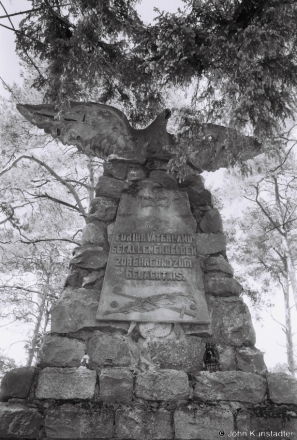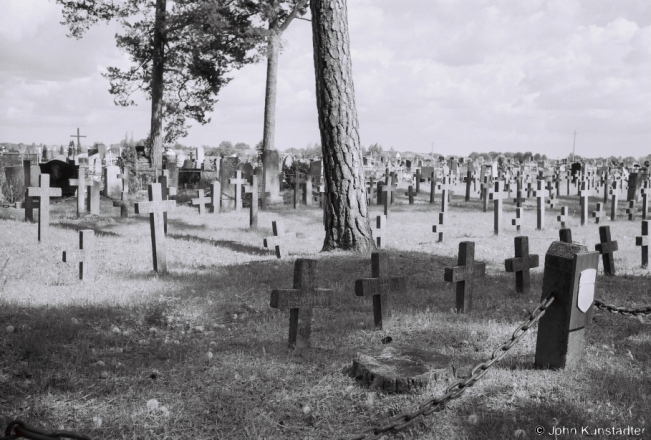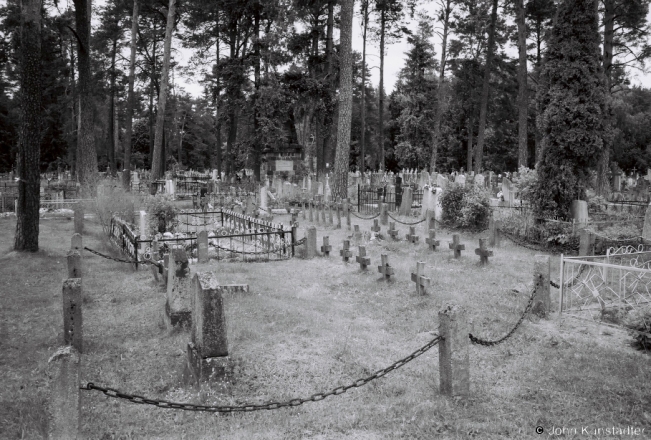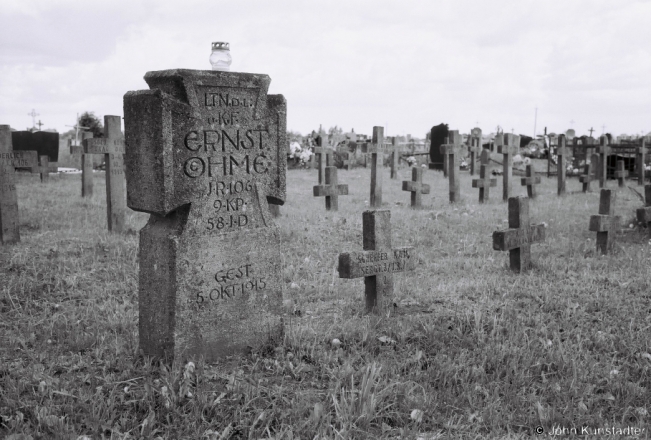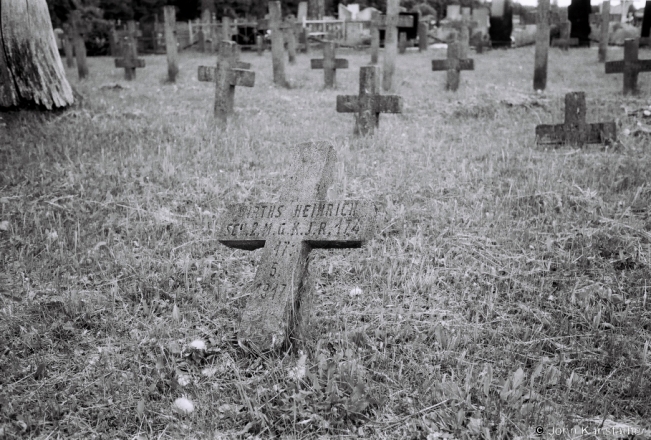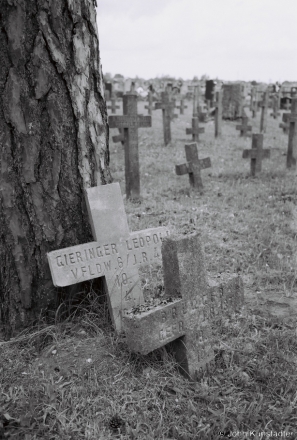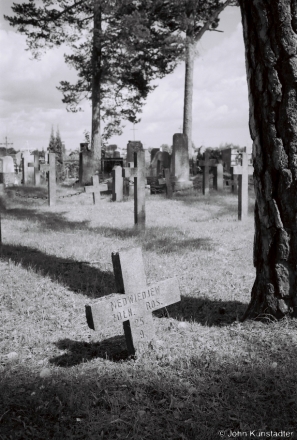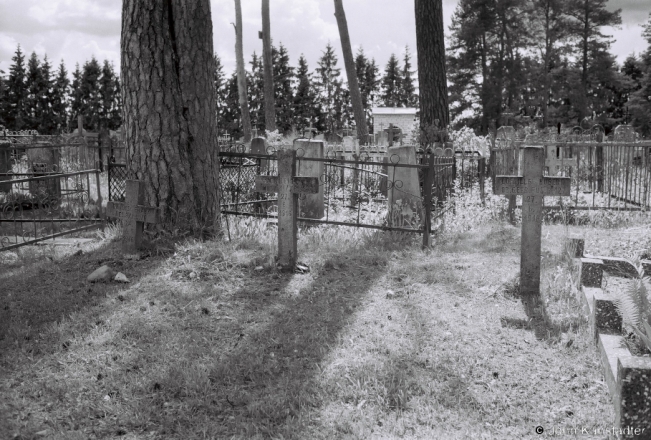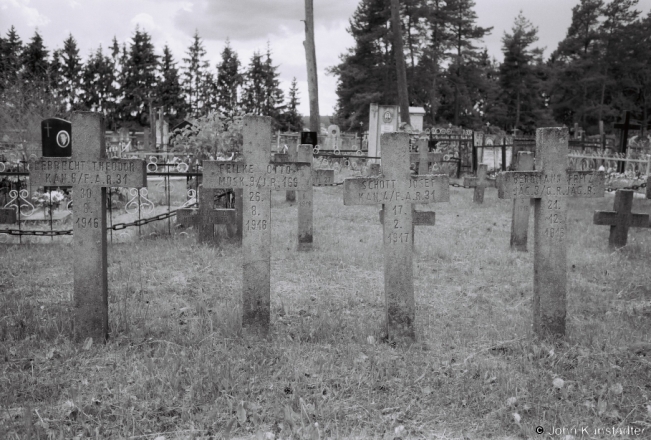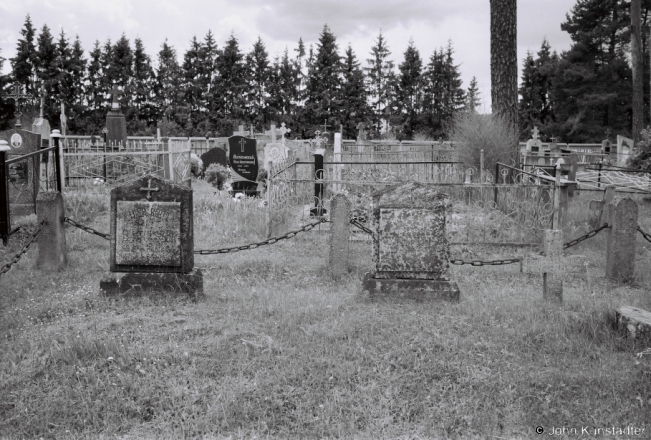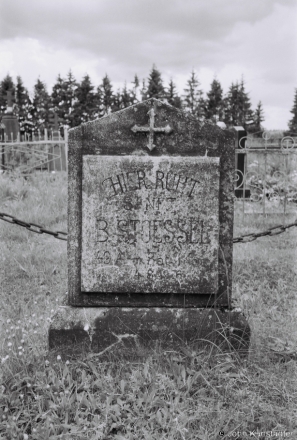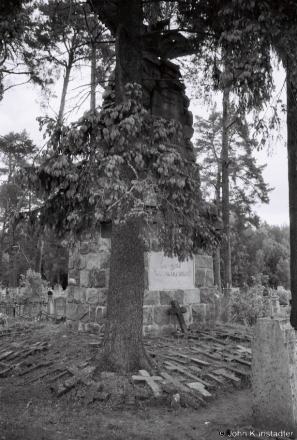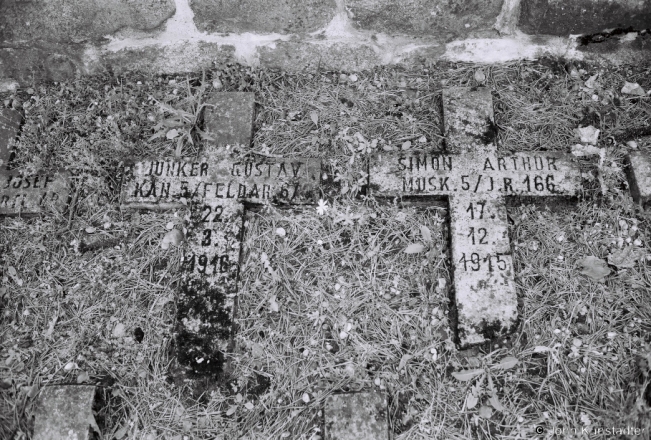Photo expedition to Mjadzjel District: Charemshytsy, Zas’vir, Kurkuli, Varashylki, Kanstantsinava, Vjentsavichy, Kalodna, Narach (Kabyl’nik).
Фотавандроўка па Мядзельскім раёне: Чарэмшыцы, Засьвір, Куркулі, Варашылкі, Канстанцінава, Венцавічы, Калодна, Нарач (Кабыльнік).
World War I cemeteries (part XXIII): German cemetery in Narach (Kabyl’nik) 2018.
After World War I the German War Graves Commission (Volksbund Deutsche Kriegsgräberfürsorge — “Volksbund”) paid the government of the Second Polish Republic to look after German war cemeteries on Polish territory, which between 1921 and September 1939 included the western Belarusian lands. The Poles undertook careful exhumations and where necessary reburied soldiers’ remains under new tombstones in more than 150 German cemeteries in the Belarusian lands.
In a few cases, including in the cemetery in Narach, the remains were those of soldiers from the Russian imperial army; the Poles treated those remains with equal respect (see below). In stark contrast, at no time did the Soviet regime showed interest in honoring Russian imperial army graves. After occupying the western Belarusian lands when it invaded Poland in September 1939 together with Nazi Germany, the Soviet regime neglected all World War I cemeteries. Since the collapse of the Soviet empire, the Volksbund has again been active in helping put some German World War I cemeteries in Belarus in order, as here.
Могілкі Першай сусьветнай вайны (частка XXIII): нямецкія могілкі ў Нарачы (Кабыльніку) 2018 г.
In some cemeteries, as here, regiments built elaborate memorials. See, for instance, the memorial in the large German cemetery in Dzjasjatniki (photos of the day for December 1, 2015).
На могілках у Нарачы знаходзіцца вялікі палкавы помнік. Гл. падобны па маштабе помнік у Дзясятніках (фотаздымкі дня 1 сьнежня 2015 г.).
This grave, of a soldier of the Russian Imperial Army named Nedvedev and with the inscription in Polish, is an example of how the Polish authorities cared for the graves of war dead from both sides with the same gravity and respect.
Прыклад павагі польскіх урадаў памерлым абодвух бакоў: надмагільле салдата Рускай імператарскай арміі Недведева.
With the passage of time graves of the local population have taken over part of the German cemetery…
На працягу часу магілы мясцовых людзей займалі частку нямецкіх могілках…
…and the German headstones have been laid at the foot of the regimental memorial.
…і зараз гэтыя нямецкія надмагільлі ляжаць пад палкавым помнікам.
